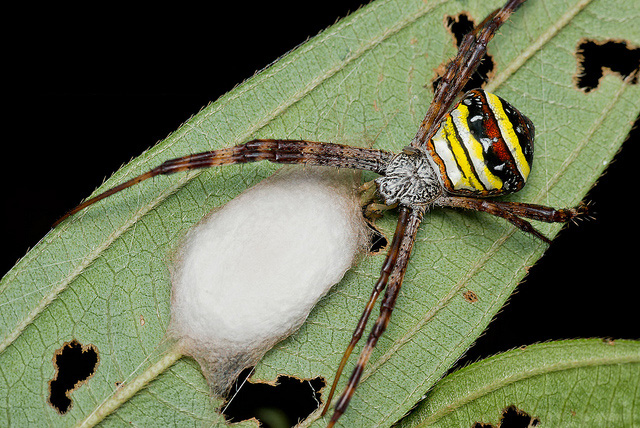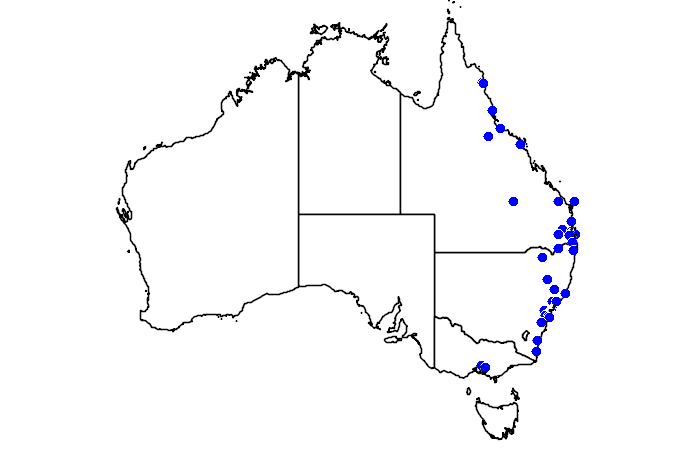Size
Females 1 – 2 cm long but the tiny males are only 3 – 5 mm long (body length).
Behaviour
Diet
Insects, including flies, moths, butterflies, grasshoppers and bees caught in its web, which is strung between low shrubs and long grass. The prey is wrapped in silk and eaten straight away or hung nearby for later, although smaller prey may be bitten first.
Movement
The female usually hangs upside down on the underside of the web, in the centre, with its legs resting in pairs and placed along each arm of the webbed cross. It occupies the web continuously and is active at various intervals throughout the day and night. If threatened, it will either drop from the web or shake the web so vigorously that it and the webbed cross become a blur, confusing any potential attacker. The male usually builds a smaller web close to the female, or sits on the outskirts of the female’s web, on the top side.
Breeding
From summer to autumn. Several males will often sit on the upper outskirts of a web, on the opposite side to the female, waiting for an opportunity to mate with her. The male constructs a mating thread within the web which he vibrates to attract the female. After mating, the female wraps several pear-shaped, green egg sacs in a network of silk and suspends them in nearby vegetation or from a wall.
Field Guide
Improve your identification skills. Download your St Andrews Cross Spider guide here!





